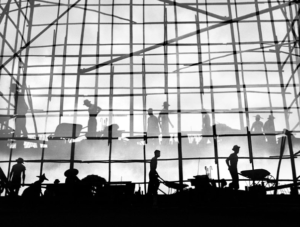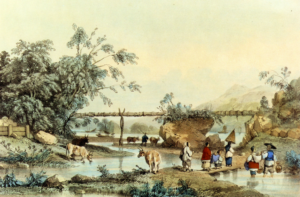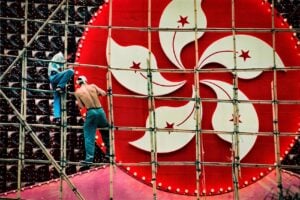The Art of Bamboo Scaffolding in Hong Kong
Hong Kong’s skyline may be widely known for its skyscrapers made of glass, metal and steel, but bamboo scaffolding is equally emblematic and encapsulates the city’s cultural identity and unique urban landscape. Skilled scaffolders can erect enough bamboo to wrap a building in a day using millenary techniques passed down through generations by masters. The art of bamboo scaffolding is even listed as part of the Hong Kong intangible cultural heritage.
The use of bamboo as a building material dates back centuries, with its origins rooted in traditional Chinese construction methods. However, its prominence in Hong Kong emerged in the mid-20th century, coinciding with the rapid urbanisation and construction boom following World War II.
Initially, bamboo scaffolding was employed primarily for its availability and cost-effectiveness. The unique topography and dense urban environment of Hong Kong made bamboo scaffolding particularly suited to navigate tight spaces and irregular building shapes. Craftsmen known as “scaffolders” developed specialised skills in creating intricate bamboo frameworks, allowing them to build multi-story structures quickly and efficiently.
Until the colonial period, bamboo scaffolding was used mainly for smaller buildings and traditional outdoor theatres. As Hong Kong grew, so did the scale of the scaffolding. The flexibility of bamboo allowed workers to construct scaffolding that could be easily assembled and disassembled, catering to the dynamic nature of construction projects. Furthermore, bamboo’s natural properties—such as its resistance to corrosion and its ability to absorb shocks—made it a practical choice in an environment prone to typhoons and heavy rains.
As the city grew, so did the use of bamboo scaffolding in high-rise construction. In 1960s, workers, industrialists and businessmen fled China for Hong Kong, leading to the sudden growth and expansion of property development in the city. All of this rapid development allowed bamboo scaffolding to flourish in the local industry. By the 1970s, it had become a common sight in Hong Kong, with scaffolders skillfully weaving together poles to create towering platforms. This method became a symbol of Hong Kong’s industrious spirit and ingenuity.
In recent years, bamboo scaffolding has faced challenges from modern construction practices, including the use of steel and aluminium, but it remained a vital part of Hong Kong’s cultural identity. The Hong Kong government and various organisations recognised its significance, making efforts to promote and preserve this traditional craft. In 2011, bamboo scaffolding was inscribed on the UNESCO Representative List of the Intangible Cultural Heritage of Humanity, highlighting its cultural importance.
Beyond its functional role, bamboo scaffolding has inspired numerous artists and photographers. Its intricate patterns and the juxtaposition of organic materials against urban landscapes create visually striking images. Artists have captured the ephemeral beauty of these structures, often highlighting the contrast between traditional craftsmanship and modern architecture. Photographers, too, have found inspiration in the play of light and shadow created by the scaffolding, using it as a subject that encapsulates the dynamic character of the city.
On 17 March 2025, the Development Bureau announced plans to “drive a wider adoption of metal scaffolds in public building works progressively”. This constitutes the beginning of a phase-out of bamboo scaffolding in Hong Kong. Preserving the memory and artistry of bamboo scaffolding may become increasingly important as it fades from the skyline, leaving behind a legacy that speaks to Hong Kong’s rich history and vibrant culture.



